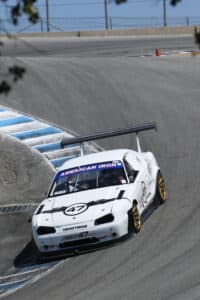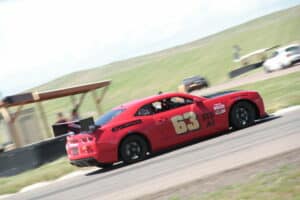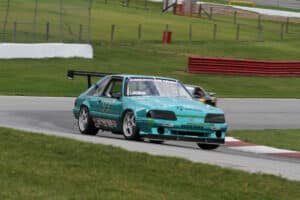
Everything You Wanted to Know About NASA's American Iron Racing Series
The roar of a V8 at full throttle is irresistible, and it’s what gives the American Iron series so much of its character. The series enjoys a virtually unlimited supply of donor cars because it is open to any American-made sedan or coupe from 1960 forward, and the power-to-weight ratios keep things simple. Sandwiched between the wide-open rules structure of American Iron Extreme and the more limited Spec Iron series, American Iron provides racers a lot of room for creativity when building a car, and provides close competition on track. “Those older cars with the right driver can be just as competitive as the newer cars,” said Rob Capetz, series leader for the Southern California Region. “That’s the beauty of the power-to-weight ratio.”
The American Iron series was created to meet the needs of domestic sedan racers looking for a series specifically tailored to accommodate modified vehicles that are currently relegated to racing in Unlimited or Spec-limited series. This series is designed to field a large high-profile group of American muscle cars and will unify fields of cars that currently race in other sanctioning organizations. With this in mind, a variety of other sanctioning organization formats (such as standing starts and flying starts) may be employed during the regional racing season and at the National Championship. This large field/open modification concept will provide racers and vendors access to a promotional racing venue containing similarly prepared and appearing cars that can run nearly unlimited configurations.
Tires, size, brand and prices
Toyo Proxes RR 275 35ZR 18 $306
Toyo Proxes RA1 275 35ZR 18 $301
Brakes, brands and prices
Front, with stock calipers; Hawk DTC 70 $235
Rear, with stock calipers; Hawk DTC 60, $195
Check the NASA Contingencies page for the latest programs.
American Iron Resources
Questions and Answers to Feed Your Curiosity
In the back of each rulebook is a contact list for all series directors. Simply send us an email or give us a call.
Latest American Iron News Around The Country
Whether you have a street car you run in HPDE, a fire-breathing TTU monster, or one of NASA’s many spec-class racecars, you need quality lubricants […]
Wouldn’t it be great if there were a NASA contingency and Member Benefits partner that offered rewards and discounts on hardcore racing parts we […]
As NASA’s official tire retailer, TrackDayTire.com gives NASA members immediate access to an extensive national inventory of Toyo and Hoosier DOT R […]
The Ford 5.0-liter Coyote engine was developed to compete with modern high-power offerings, and the Mustang is becoming more and more popular in […]
The 2023 NASA Championships were the culmination of hard work and sacrifice for the drivers who came from across the United States to compete at the […]
What American Iron Competitors Say



Get On-Board with American Iron Drivers
American Iron Series Contacts